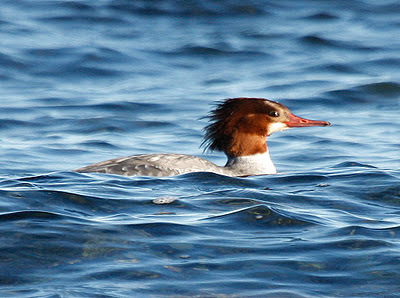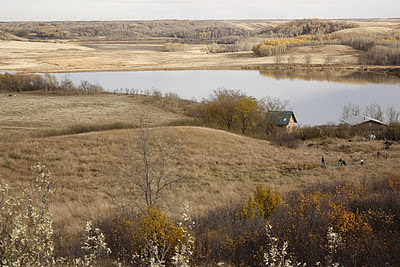 Upland Sandpiper--it was a good year for this species in Saskatchewan
Upland Sandpiper--it was a good year for this species in SaskatchewanI had an experience this summer that helped me see with fresh eyes the blessings that remain in the prairie world, urging me to be grateful for the wild creatures who continue to enliven our pastures, fields, and sloughs.
A friend I know from volunteering a couple of times at Regina's
Marion Centre asked me if I would take her and a visiting member of their apostolate for a bird outing.
Doreen is a sweet soul, open-hearted and full of spirit, so I knew it would be fun to show her some birds. Her friend, Charlie, was from Maryland originally and wanted to see some of our landscape and birds before he left.
I took them for a slow drive east along my favourite road out of the city one evening. Just an average, mid-summer evening: warm light coming from behind us, and a typical mix of birds. What transformed the trip, though, was the way Doreen and Charlie responded to each bird sighting, whether it was a meadowlark in breast-swelling song or a gang of cowbirds on a fence line.
We got a few looks at the Bobolinks and Common Yellowthroats who breed in an Agriculture Canada research field, a pair of Western Kingbirds, a couple of Swainson's and Red-tailed hawks on power poles.
 Western Kingbird--a common sight along prairie roads
Western Kingbird--a common sight along prairie roads"Oh my, how beautiful," Doreen would say as each bird showed up in her binoculars. Sometimes it was just a small sound of delight. Both she and Charlie received the birds that came our way with a fresh welcome and complete gratitude for the gift manifest in feathers, song, wings.
I found myself relaxing and happier than I am sometimes when I am alone and grumbling in lament for all that I know is missing from the landscape. An Upland Sandpiper whistled and I felt my heart lift. Looking up, we found it flying with rapid, stiff wingbeats before landing on a power pole.
Moments later, we watched a Solitary Sandpiper and a group of six American Avocets foraging in Wascana Creek. The avocets, fading from their bright breeding plumage, flew back and forth in front of us, up and down the channel, long legs trailing, backs humped, heads lowered. It was glorious seeing them in these slow, circling flights.
 American Avocet, beginning to moult
American Avocet, beginning to moultAs the evening passed I told Charlie and Doreen about the moult of the avocets, the sexual behaviour of the bobolinks, the natural history of cowbirds, and I spelled the word "slough" for them, unfamiliar as it is to people from the eastern half of the continent.
Later we all watched in awe as a Vesper Sparrow sang to the setting sun from its ditch-side dock plant.
 Vesper Sparrow, head back in full song
Vesper Sparrow, head back in full song"So many birds. I can't believe how many birds there are here," Doreen said as we watched cowbirds with some cattle.
I see all that is missing and they see all that is there. And instead of complaining, they were grateful, so grateful, part of them bowing inwardly to each creature, each field of cut hay, or barn, or row of fence.
I don't know if I have ever felt that deep receiving thankfulness, but it seemed in that moment like something I had lost and wanted dearly to feel again.
And so, thanks be for Upland Sandpipers, Avocets, Vesper Sparrows and the many birds we still have. Thanks be for the wet season we had, the waterfowl it spawned in the millions across the land, and thanks be for farmers and ranchers who have found it good to keep native grass or any kind of grass on the land they draw a living from.























































